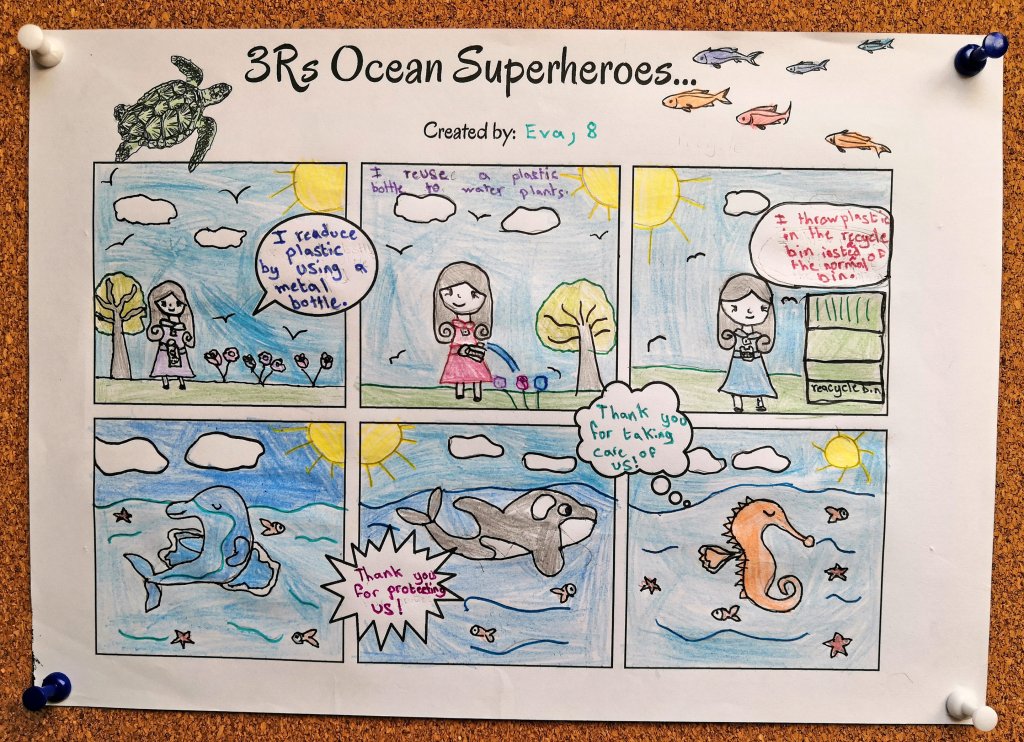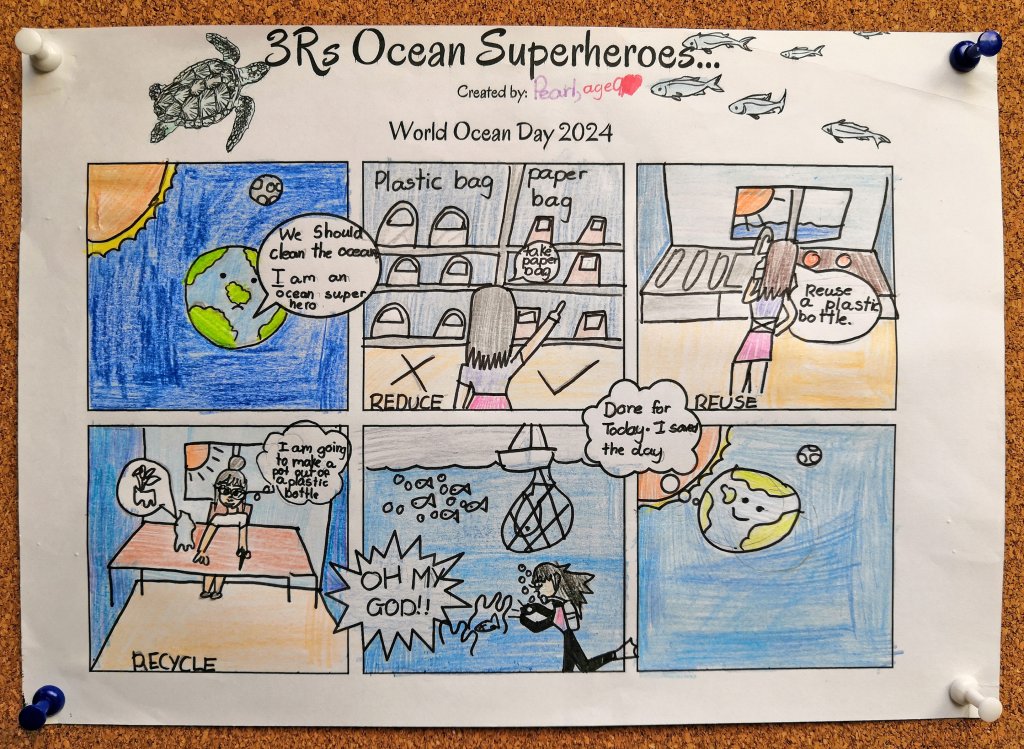Using Comic Strips as an Assessment Tool
Unorthodox assessments can bring out students’ creativity and improve their engagement in class.
Your content has been saved!
Go to My Saved Content.In running an after-school club for students learning English on the island of Mauritius, I always strive to bring interactive, engaging, hands-on activities to the learners under my care. And as a National Geographic Certified Educator, I use nature and environmental literacy to teach the language. Each lesson includes creative art as part of the learning process. When I first started teaching, I had no idea that what began as a fun activity for my students would become an assessment tool using comic strips.
My students and I started a project last year to learn about the effects of plastic pollution on the environment and human health along with how to take concrete action to reduce, reuse, and recycle, or 3R, plastics. One of the activities was to create a mini-story about being a 3Rs ocean superhero, using a six-box comic strip. My students range in age from 7 to 15 and have different levels of English knowledge, mostly intermediate. They have all done the same activity with varying degrees of creative expression and vocabulary.
Scaffolding
The following scaffolding activities allowed the students to create a mini-story comic strip about how they could implement the 3Rs, which I used to simultaneously assess their understanding:
- Playing a lifespan-of-plastic matching game
- Watching a TED-Ed video on the life cycle of a plastic bottle
- Discussing photos of marine animals affected by ocean plastic pollution
- Reading Let’s Clean Our Precious Mauritius and drawing our favorite part of the story
- Reading Earth Reminder, a 3Rs infographic
- Brainstorming about how to 3R plastics in their immediate environment (at home, at school and in their community)
The Comic Strip Assessment Process
I asked students to create a mini-story comic strip where they would be 3Rs ocean superheroes.
The criteria: The words reduce, reuse, and recycle had to be part of the story. The drawings and sentences also had to show and/or describe the actions they were taking to be a 3Rs ocean superhero.

Vision board: A vision board helped the students keep their focus on the flow of the story and which elements should be included while crafting their comic strips.
The aim of the vision board was to give space and time for the students to imagine themselves as main actors in the understanding and application process. Even though writing sentences would suffice, having visual reinforcements can help students better retain the information.
Collaborative assessment: After the task, the words and drawings were assessed orally, working with each student one-on-one. Additionally, peer assessments could be applied here: I call it the gallery assessment, where I displayed all comic strips on the wall, and students walked around and gave constructive feedback.

The samples in this article are from Eva, age 8, and Pearl, age 9. The activity or assessment can be applied to different ages. The drawings vary from simple to more detailed visuals. The sentence structures also vary based on the students’ proficiency levels. The key as an educator is to keep an open mind with the creative expressions, as they are unique for each student.
Comic Strip Styles
Traditional: There are numerous websites with free downloadable or printable comic-strip formats. Here are some of them that I found and used:

Now, if you are Canva-savvy, you can create your own themed comic strip, as I did for the 3Rs ocean superhero.
Digital: I have encountered some students who needed more confidence in drawing, so I encouraged them to create a digital comic strip using Canva. Some of them used the templates already in place; others made their own by using graphics and photos.
Interdisciplinary Options
Comic strips can be used to assess many areas of learning. As a TESOL (Teaching English to Speakers of Other Languages) and eco-educator, I have used them as a way to assess my students’ understanding. The process of using creative arts as an assessment tool not only is an interesting and engaging way for the students to be assessed without test pressure, but also gives them the space and agency to express and transfer their creativity on a canvas.
Below are some activities where I have used comic strips as an assessment tool.
Environmental Science: Growing of a Seed: The students are asked to represent on a comic strip the different steps of how to grow a seed into a plant.
ESL/English: Adjectives (Emotions): The students explore different adjectives connected with emotions (sad, angry, delighted, amused) and find the meaning in the dictionary. As an assessment, the students create a small story on a comic strip and use the different adjectives they learned. After listening to a story or watching a short video about any topic of interest, the students show the sequence of the story on the comic strip.
Most of the time when we think about assessment as trained educators, we think in terms of grids, points, testing, and reports. The word assessment itself often becomes a source of stress and anxiety for both students and teachers. But the process can be made fun for everyone by allowing students to tap into their creativity to show what they know and can do.
